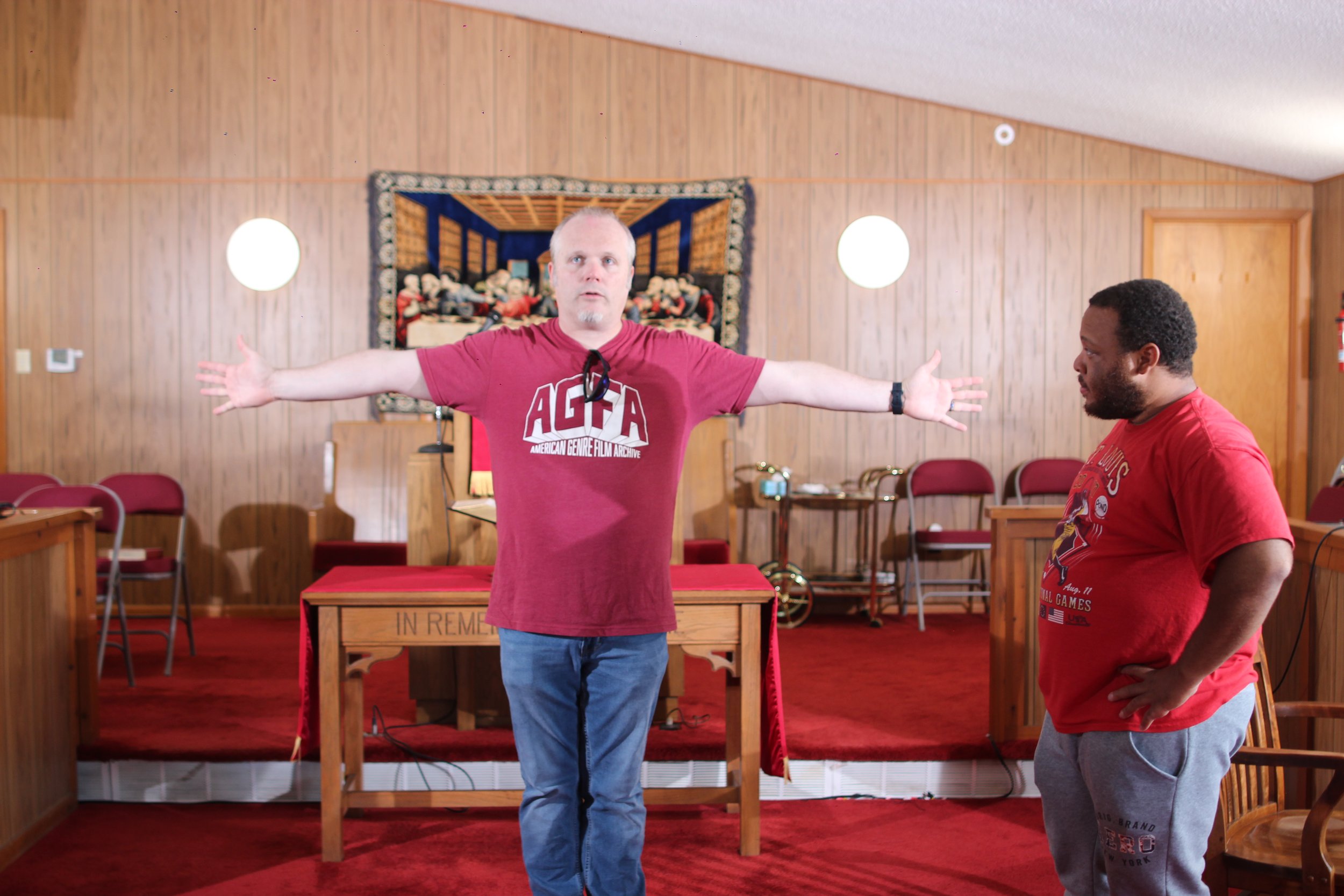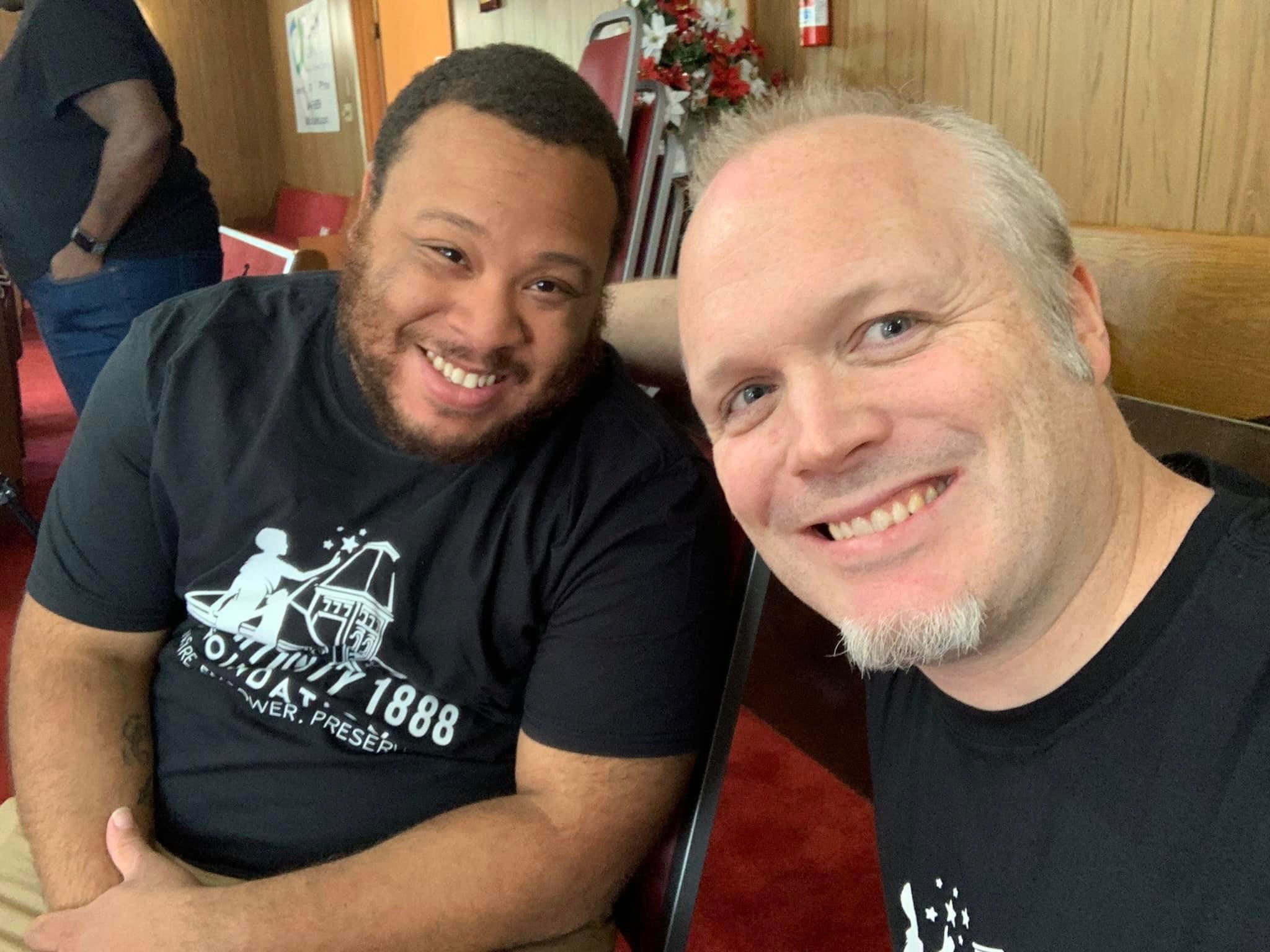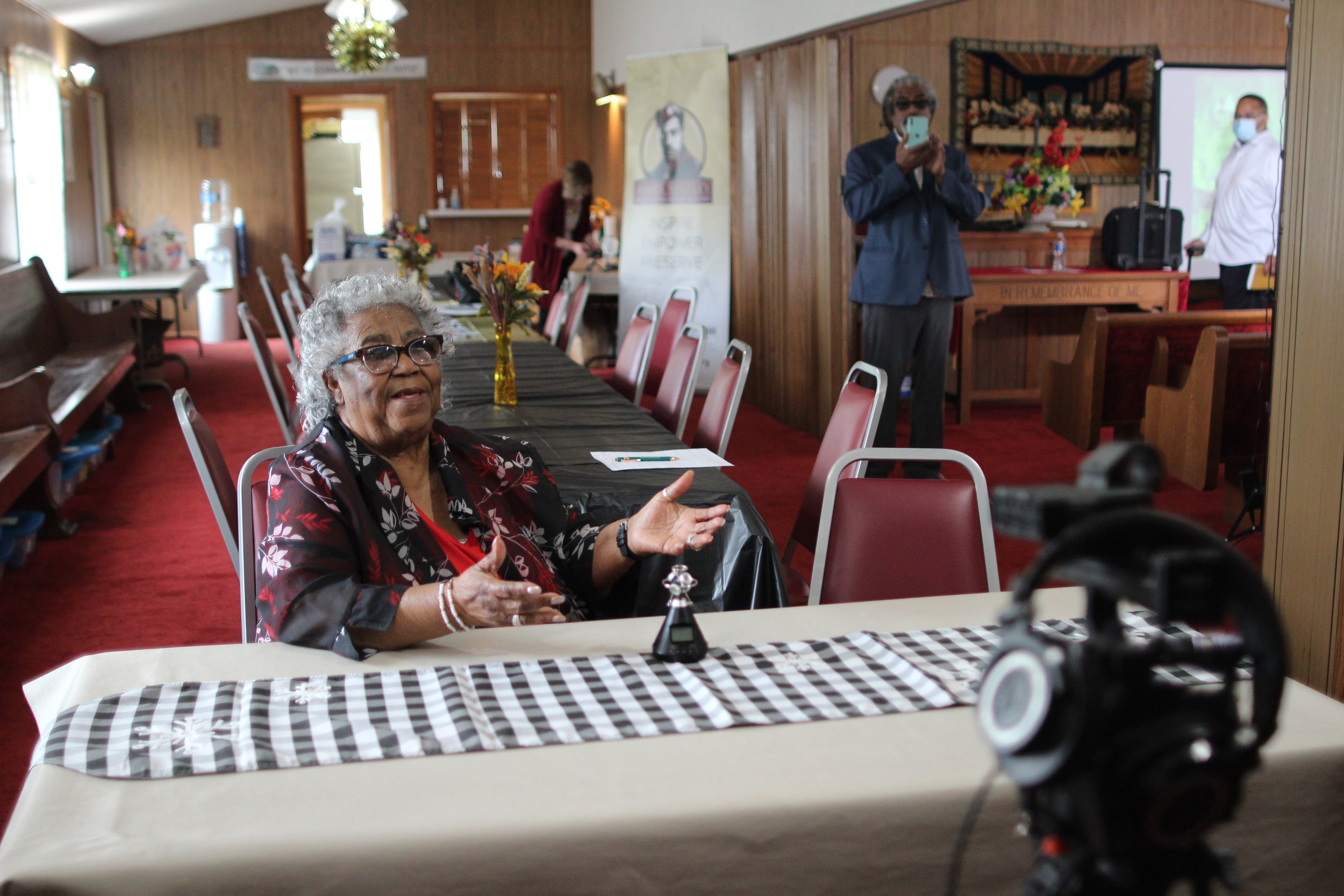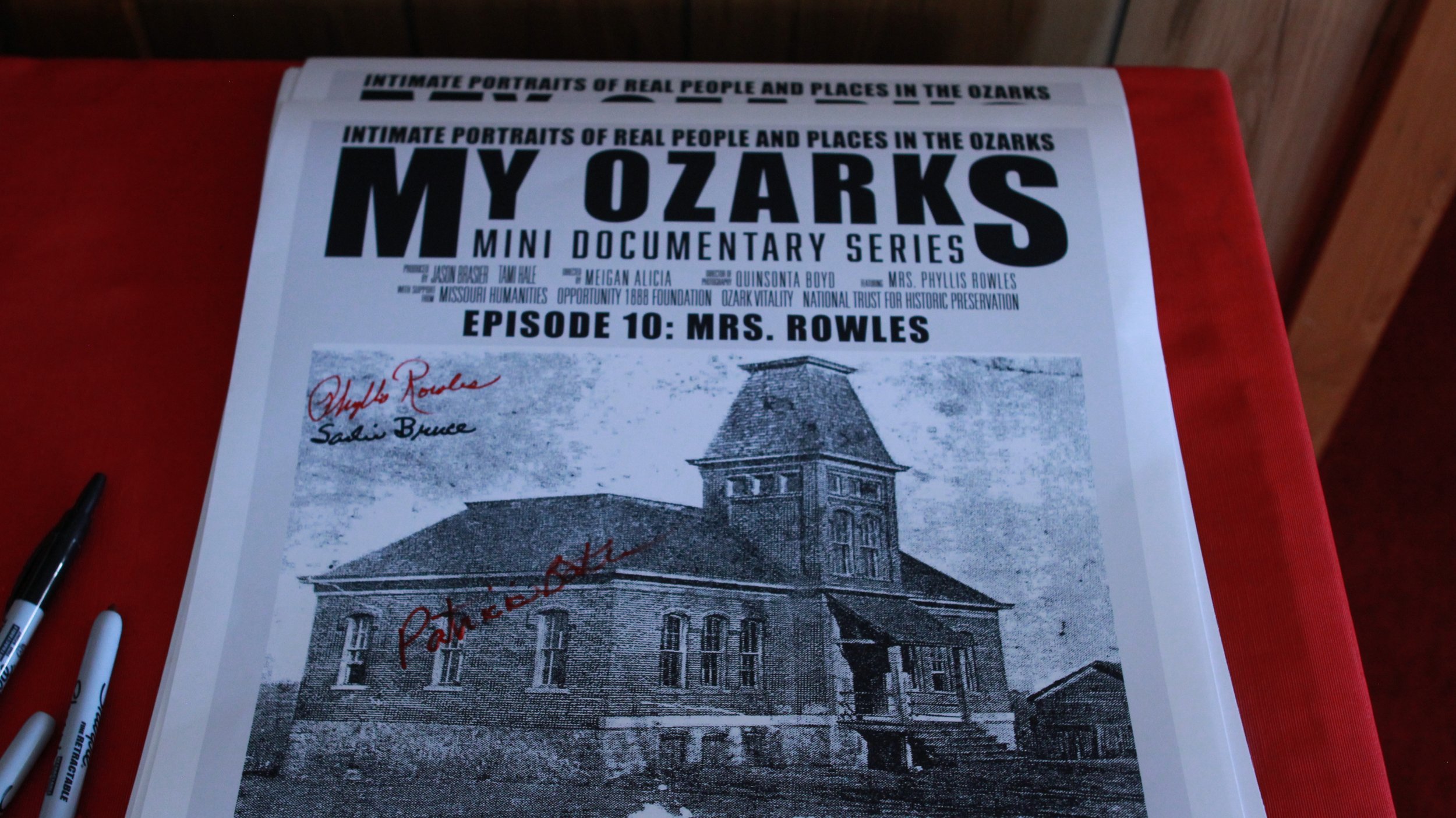My Ozarks Documentary Film Series
My Ozarks is a collection of short, intimate portraits of real people, places and experiences in The Ozarks. Our goal is to increase interest in The Ozarks and awareness of our shared history, to expand cultural and regenerative tourism in the region and encourage Ozark communities to preserve and protect their cultural heritage. In doing this, we can generate economic opportunities for artisans, entrepreneurs and cultural practitioners across the region.
Season Two: Reparative History
Honoring the Past to heal the present and dream the future
This season of My Ozarks features the histories of The Ozarks that are lesser known, less visible, and most in danger of being forgotten or erased. Our aim is to bring communities closer together through respectful recognition of our shared past, acknowledging both the proud and shameful pasts that we inherit. We believe this work of metabolizing the past can strengthen the social fabric, build bridges of trust, cooperation, and healing across differences, and help to unify, nourish, and sustain community wellbeing.
Episode 10: Mrs. Rowles
The first episode in the new season of My Ozarks introduces Mrs. Phyllis [Lacy] Rowles. As a young girl, she learned to keep climbing, to keep reaching for better things. She is one of the last living alumni of the Harrison “Colored” School in Tipton, which until 1957 was the only place recently emancipated people in Moniteau County and their descendants could go to school. Harrison School taught her that everyone is equal. You can be whoever you want to be. Find out how her life unfolded and what Mrs. Rowles is most proud of today.
The Film
A film by Meigan Alicia and Quinsonta Boyd, filmed on location in Moniteau County, Missouri.
Produced by Jason Brasier and Tami Hale, in partnership with Opportunity 1888 Foundation. Major funding provided by Missouri Humanities and the Kemper Fund for Kansas and Missouri of the National Trust for Historic Preservation.
Want to help preserve this important history?
DONATE TO OPPORTUNITY 1888 FOUNDATION
The Back Story
By Tami Hale, Co-founder of Ozark Vitality
If you have ever traveled through the small towns of The Ozarks, you have probably come across “country schools” being preserved as museums or heritage sites. Ask anyone over 65 what it was like to grow up in The Ozarks and you will likely hear memories of one-room schoolhouses and a desire to preserve the buildings and their history. As you may recall, we featured a one-room schoolhouse built by German settlers in Season One, Episode 8.
Joyce McMurtrey, Pat Johnson, Sasha Daucus, and Tami Hale at Eddie Mae Herron Center
It wasn’t until a visit with Ms. Pat Johnson, alumna of the “Pocahontas Colored School” in Arkansas (now known as the Eddie Mae Herron Center and Museum) that I realized how much I did not know about the history of education during the Jim Crow era in The Ozarks. I am now much more aware just how rare it is to find a country school being preserved that taught Black children, and how easily this important part of our shared history might be lost.
I reached out to the State Historical Society of Missouri, who had just completed a project on African American Heritage in The Ozarks, to see if they were aware of any other Black school preservation efforts in the region. They put me in touch with Opportunity 1888 Foundation, who introduced me to Mrs. Phyllis [Lacy] Rowles, one of only 14 living alumni of Harrison “Colored” School and the only one who still lives in Tipton.
In May 2023, Opportunity 1888 organized a community event and alumni reunion to acknowledge the importance of Harrison School alumni and their descendants in the history of Moniteau County, and to kickoff an initiative to preserve the school and its memories. Ozark Vitality participated in the event and created this episode of My Ozarks to acknowledge the importance of Mrs. Rowles’ story in the history of The Ozarks, and to kickoff a new season in new territory for the mini-documentary series.
Alumnae of Harrison School, surrounded by descendants of alumni, in front of the school May 2023. Photo by Lesley Woods
Alumnae of Harrison School, May 2023 (first row, left to right): Georgia Jackson Stephens Williamson, Patricia Baker, Sadie Johnson Bruce, Phyllis Lacy Rowles. Photo by Lesley Woods.
Mrs. Phyllis Rowles
Mrs. Phyllis Rowles with Director Meigan Alicia at the Harrison School Alumni Reunion in 2023
Photo by Lesley Woods
EARLY YEARS
Mrs. Rowles started life as Phyllis Lacy, living in Morgan and Moniteau Counties in central Missouri. Growing up poor, she lived off the land and learned to do things for herself by watching others. By the time she was 6 or 7 years old, she could dress a chicken, a duck or a goose. She was using a pressure cooker at an age she says no child should be allowed near one. In her interview with Director Meigan Alicia for this episode, Mrs. Rowles recalled a time when she was 8 or 9 years old, starting the pressure cooker then going outside to play. She barely made it back in time to prevent disaster.
From grades 1-7, Mrs. Rowles attended the Harrison “Colored” School, taught by Mr. Galveston Shipley, who was also the school principal. In these formative years, she learned to respect her elders, do what she was told, look out for others, and always try to do right by everyone. Harrison School taught her to keep climbing, to keep reaching for better things. Harrison School taught her that everyone is equal. You can be whoever you want to be.
Page from the Tipton High School Yearbook 1957-58 with Mrs. Rowles’ photo highlighted
She and her friends were happy when they learned they were going to public school because they thought it meant more opportunity. At that time, the only work for Black women in Tipton was cleaning people’s homes. Mrs. Rowles’ reaction was: “ I'm not cleaning nobody's house. I don't even keep my own house clean. I’ll drive somewhere else if I have to…I can do better. ” She planned to get out of school and join the secret service.
Mrs. Rowles was disappointed to find out people weren’t as friendly in public school as they had been at Harrison. Reflecting back, she says “I didn’t realize there would be such a difference in people’s attitudes. Sometimes people didn’t want to sit beside you and they would get up and move. Or sometimes people would pass by you and put their hands over their nose. It didn’t bother me, it was just different. And it was sad.”
On the other hand, Mrs. Rowles remembered teachers at public school taking time to explain things. “They would always ask: ‘Do you understand what I’m saying?’ or ‘Do you understand this problem?’ They wanted to make sure we understood whatever it was they were teaching us.”
When Mrs. Rowles got to Tipton High School, she tried out for the softball team and earned a place in the outfield. She recalled her parents always being around, cheering her on, watching her softball games from their car on the side of the road. They didn’t feel comfortable coming into the bleachers, but “I'd always hit a home run and dad would always be so happy that his girl hit a home run.”
The team members became “buddies” and would often sit together at the school cafeteria and travel together on a bus to away games. Unfortunately, it took a couple of years after the public schools were integrated for the community to integrate. Mrs. Rowles recalled during her time at Tipton High School, people of color were not allowed inside restaurants. So, if the softball team stopped at the Dairy Queen on the way home from a game, she would give money to one of her friends. Her friend would go inside and buy the food and bring it back to the bus, where they would sit on the step of the bus and talk and eat together. The rest of the team ate inside.
PROFESSIONAL CAREER
Mrs. Rowles working with one of her FNEP families. Photo provided by Mrs. Rowles.
Mrs. Rowles’ interest in cooking inspired her to join a Homemakers Club. A woman who taught food classes for the club encouraged Mrs. Rowles to apply for a job at University of Missouri Extension in Boonville, as part of the Family Nutrition Education Program (FNEP). When Mrs. Rowles got the job, she became the first Black woman with an office in the Cooper County courthouse. Starting in the mid-1960’s, she worked as a paraprofessional with a caseload of over 50 families at a time, teaching food preparation and nutrition to families on fixed incomes across Cooper County and parts of Saline and Moniteau Counties, as well as running youth programs.
All throughout her career in food and nutrition, Mrs. Rowles was raising her children and helping her husband with their construction company and farm, raising Angus cattle, and managing rental property. For over a year after leaving Missouri Extension, Mrs. Rowles ran food demonstrations for Gerbes Supermarket before leaving to focus on the businesses she ran with her husband. From 1976-1978, Mrs. Rowles was the only Black woman to serve on the school board in Bunceton, Missouri, where her children attended.
School board photos in the Bunceton yearbook. Photo by Quinsonta Boyd.
When their son started college in 1979, Mr. and Mrs. Rowles opened a nightclub and lounge in Tipton called the Ebony Lounge (later changed to Mr. J’s), which was one of the only such places where people of color were welcome. The Lounge was open for over 8 years and helped put both of their children through college, attracting young people and professionals from all over the area. Mrs. Rowles created a barbeque sauce she served at the Lounge that became very popular. Someone encouraged her to patent the sauce, but she was simply too exhausted to pursue it. Now, she wonders how things might have turned out if she had.
Greatest ACCOMPLISHMENTS
During her career at University of Missouri Extension, Mrs. Rowles estimates she worked with 200-300 young people she refers to as “her kids”. Now those “kids” are 40-50 years old and she appreciates hearing stories about how her influence made a difference in their lives.
Mrs. Rowles with her FNEP kids. Photo by Quinsonta Boyd.
Mrs. Rowles with her FNEP kids. Photo by Quinsonta Boyd.
She considers her greatest accomplishment to be her two children and six grandchildren—all who attended college, with two earning doctor’s degrees. Since her grandchildren were young, Mrs. Rowles has always stressed the importance of working for a living. “They would come and say, Grandma, you got a job for us to do today?” She always made up some kind of job for them and paid them for it. Even when they told her she didn’t have to pay, she did it anyway.
Photo of her grandchildren, provided by Mrs. Rowles
Mrs. Rowles looking through her family photos. Photo by Quinsonta Boyd.
Family Photo, provided by Mrs. Rowles
The Place
TIPTON, Missouri
38.658539° N, -92.775248° W
Tipton is a town in Moniteau County in Central Missouri, with a population of less than 3,000 people. It is located near the northern edge of The Ozarks, where The Ozarks overlap with an area settled in the 19th Century by individuals migrating from North Carolina, Virginia, Kentucky and Tennessee. This area, named “Little Dixie” by its proslavery settlers, was home to 59% of Missouri’s enslaved people in 1860.
At its height in 1870, Tipton’s Black community accounted for over 22% of the local population, but declined steadily over the next 150 years. By 2020, Black residents made up less than 13% of the population in Tipton, and less than 3% of Moniteau County's overall population.
Harrison “Colored” School
For 67 years, Harrison School was the only place recently emancipated people in Moniteau County and their descendants could go to school. It stands as one of the few remaining 19th-century school buildings in the U.S. built explicitly for Black students. In 1888, a bond levy brought $12,000 for construction of separate schools for white and Black students, of which $2,000 was allocated for the Black school. Although the separate school was not equal to Tipton public schools, the opportunity created in 1888 went beyond education. The Harrison School was an integral part of Tipton’s Black community and it is now one of only 2% of places on the National Park Service’s Register of Historic Places that represent African American history.
Harrison School class photo circa 1904. Galveston Shipley is in the front row, third student from the left sitting on the step.
Harrison School class photo from the 1930’s, with teacher Mr. Galveston Shipley on the right.
Mrs. Phyllis [Lacy] Rowles is in the back row, to the left of Mr. Galveston Shipley, Principal. This photo was used in Tipton’s public school yearbook for 1955-1956, as it reported on the “colored” school and no school yearbooks ever existed for Harrison School.
This episode is the result of a year-long collaboration with the incredible team at Opportunity 1888, to whom we are grateful and by whom we are inspired. In their own words…
“Our mission is to inspire and empower people to value and preserve their historic journey. We hope our programs encourage and motivate future generations to learn how people born in bondage, held as property, and subsequently emancipated could then study, earn degrees and become leaders. The sharing of our history, which was previously omitted, adds significant value to the narrative of “Little Dixie” and the community of the formerly enslaved citizens of Tipton, Missouri.”
The Filmmakers
Meigan Alicia, Director. An experienced storyteller with a wide range of experiences in film production including Casting Director, Production Assistant, Post Production Supervisor and Voice Actor. Meigan is a student of Continuity St. Louis, a nonprofit dedicated to addressing the disparities and lack of equity in the film and media production industry. This episode is her directorial debut. Find her on Instagram: @MeiganAlicia
Quinsonta Boyd, Director of Photography. An independent artist, graduate of Roosevelt High School in St. Louis, and board member of Continuity St. Louis. For the past decade, Quinsonta has worked with organizations such as St. Louis Artworks, the Scholarship Foundation of St. Louis, Nine Network, St. Louis Science Center and Speak Up Productions. Quinsonta was the Director of Photography for My Ozarks Season One Episodes 2,3,4, and 7. Find him on Instagram: @BoydMediaSTL
Jason Brasier, Producer and Directing Coach. An award winning writer, director, and producer hailing from Springfield, Missouri. Jason directed My Ozarks Season One Episodes 5,6, 8, and 9. Jason's background ranges from work in infomercials, commercials, and live television to documentaries, film, and web series. Find more of his work at Flintlock Syndicate or Instagram: @JasonBrasierFilm
Behind the Scenes
Photos by Lesley Woods, a St. Louis native who developed her passion for candid photography as a child when her mother gave her her first disposable camera. Later, she attended Memphis College of Art where she studied fine arts and photography. Lesley has been working with her camera for over twenty years. Find her on Instagram: @LesleyWoodsPhotography





































